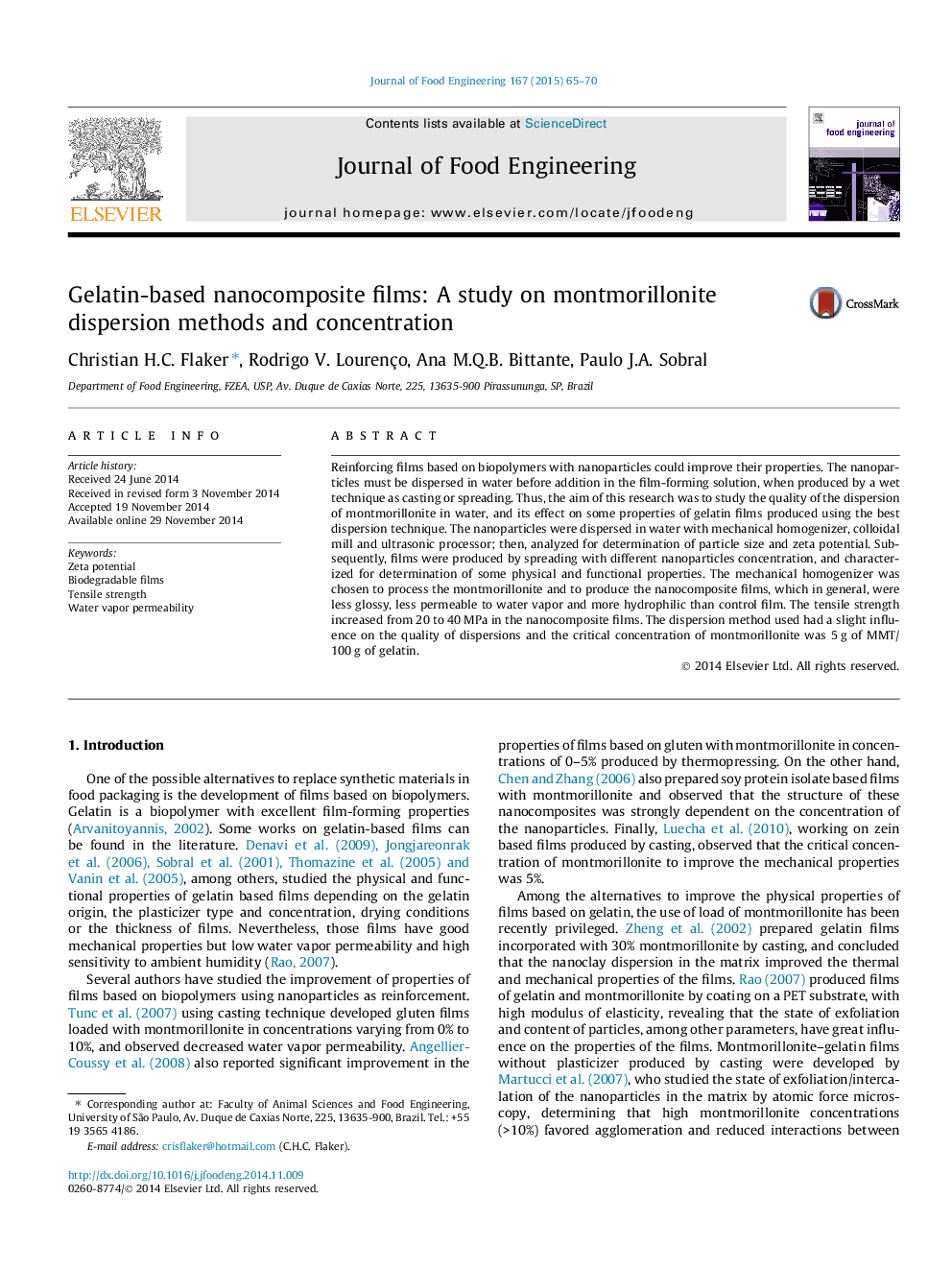| Article ID | Journal | Published Year | Pages | File Type |
|---|---|---|---|---|
| 222874 | Journal of Food Engineering | 2015 | 6 Pages |
•The dispersion method had a slight influence on the particle size and stability of dispersed nanoparticles.•The mechanical homogenizer treatment produced the most stable montmorillonite dispersion in water.•The surface properties of the nanocomposite films varied considerably due to the presence of the montmorillonite.•Well dispersed montmorillonite improved the mechanical properties of gelatin films.
Reinforcing films based on biopolymers with nanoparticles could improve their properties. The nanoparticles must be dispersed in water before addition in the film-forming solution, when produced by a wet technique as casting or spreading. Thus, the aim of this research was to study the quality of the dispersion of montmorillonite in water, and its effect on some properties of gelatin films produced using the best dispersion technique. The nanoparticles were dispersed in water with mechanical homogenizer, colloidal mill and ultrasonic processor; then, analyzed for determination of particle size and zeta potential. Subsequently, films were produced by spreading with different nanoparticles concentration, and characterized for determination of some physical and functional properties. The mechanical homogenizer was chosen to process the montmorillonite and to produce the nanocomposite films, which in general, were less glossy, less permeable to water vapor and more hydrophilic than control film. The tensile strength increased from 20 to 40 MPa in the nanocomposite films. The dispersion method used had a slight influence on the quality of dispersions and the critical concentration of montmorillonite was 5 g of MMT/100 g of gelatin.
